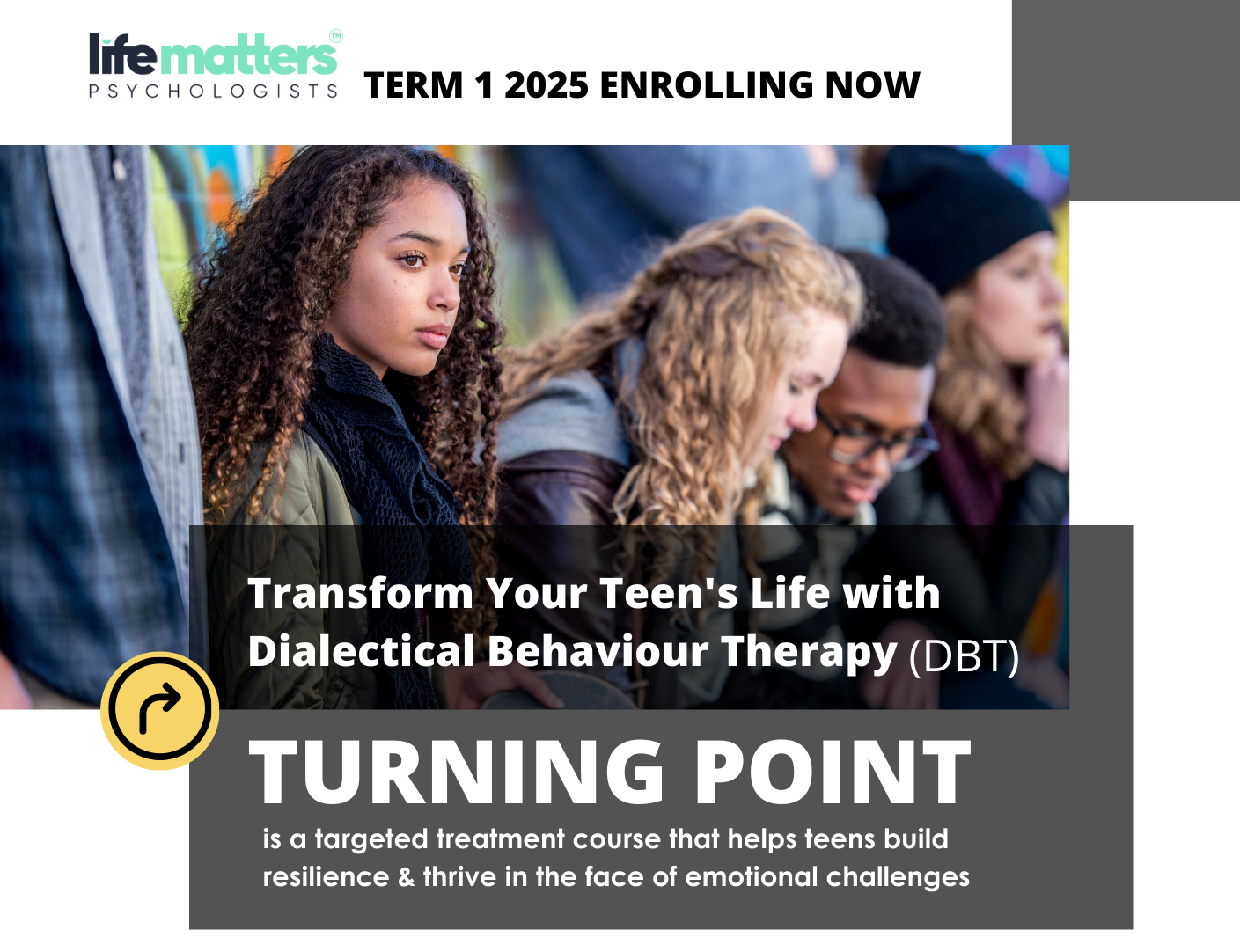What is DBT and how can it help teenagers?
Being an adolescent comes with a unique set of challenges. From physical changes and hormones to life-changing experiences and firsts, teens often find themselves overwhelmed and confused. Many times, they wrestle with their issues and relational challenges alone, or with only peers and social media to guide them. We take a look at DBT and how it can help – both for individuals and in group therapy.
By Registered Psychologist Madison Samali w/ Bradley Hawkes
During this time of life, adolescents undergo significant physical changes due to puberty, including fluctuating hormones that not only affect their bodies but also intensify emotional experiences. As they navigate this stage, teens are also trying to understand who they are and where they fit in the world. During this time there is often shifting relationships with friends and family, and an increasing desire for independence. Some teens may struggle with academic pressures, bullying, or feelings of isolation. Others may seek to experiment with or feel pressured to engage in behaviours such as alcohol, drugs, and sexual activity.
Some teens may go on to develop unhealthy coping mechanisms, like impulsivity, avoidance, or self-destructive behaviours. Mental health challenges, including anxiety, depression, eating disorders, and self-harm, can also arise during this time, and some teens may even contemplate or engage in suicidal behaviours.
Dialectical Behaviour Therapy (DBT) can be a valuable tool for any teen experiencing difficulties both big and small.
What is Dialectical Behavioural Therapy (DBT)?
DBT is a type of cognitive behavioural therapy, originally developed by Dr. Marsha Linehan as an evidence-based therapy for individuals with borderline personality disorder (BPD) and self-harming behaviours. The modality focusses on creating a balance between acceptance and change. The aim of DBT is to assist people in developing the skills to grow self-awareness, manage intense emotions, cope through distressing situations and improve relationships with others.
The method is based on the biosocial theory that recognises that emotion regulation difficulties can come from a combination of biological factors (e.g., intense emotional responses and slow return to emotional baseline) and environmental factors (e.g., unsupportive family, bullying).
Who is DBT for?
Originally DBT was used as an evidence-based therapy primarily for people with BPD or self-harming and suicidal behaviour. There is now a growing evidence base for the application of DBT across differing adult and teen presentations including:
Suicidal behaviour
Self harming
High risk behaviours e.g. drug use, alcohol use and risky sexual behaviours
School avoidance
Anger management
Anxiety
Depression
Relationship difficulties
Disordered eating
Trauma
Emotion dysregulation
Stress
Communication difficulties
How does DBT work?
DBT can take place one-on-one or as a group program, with some places additionally offering regular phone check-ins and coaching during the treatment process. Length of treatment can vary, however in both settings, sessions often occur weekly.
Individual therapy
One-on-one sessions with a trained DBT psychologist, focusing on personal challenges and applying DBT skills to real-life situations.
Group skills program
Clients work together in a group setting and learn DBT skills. Group therapy often also involves individual therapy sessions to help clients consolidate their skills and reflect on personal experiences with their psychologist. Assessments are often conducted to determine client suitability for a group program.
Due to DBT at times being completed with high-risk clients, risk assessments are conducted, and risk is managed accordingly throughout the treatment process.
The five key components taught in DBT
1. Mindfulness: The practice of staying present and aware, fully engaged in the moment, without judgment.
2. Distress Tolerance: Building skills to endure and cope with intense emotional pain.
3. Walking the middle path: Balancing acceptance and change, acknowledging that two opposites can be true and being aware that there is more than one way to see a situation and manage the problem.
4. Emotion Regulation: Learning to identify, understand, and manage emotions in a healthy way.
5. Interpersonal Effectiveness: Enhancing communication skills to improve relationships and assertiveness.
Information and resources
Turning Point DBT Program
Turning Point is a 10 week DBT skills group program offered at Life Matters Psychologists for teenagers between the ages of 15-18. The program is run by psychologists Madison Samali and Sinead Day.
To fill in our Expression of Interest form, click here
To download the flyer, click here
If you’re interested, reach out via info@lifematters.com.au or 02 4965 3530
Life Matters Disclaimer
All content in our article is published for informational purposes only. It is not intended to be a substitute for professional psychological advice and should not be relied on as personal advice. Always seek the guidance of a qualified psychologist with any questions you may have regarding your mental health.




